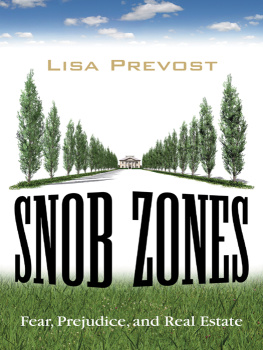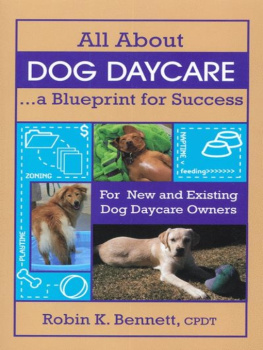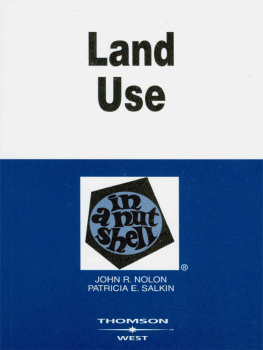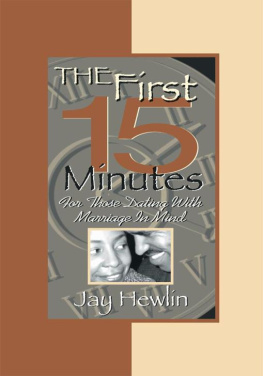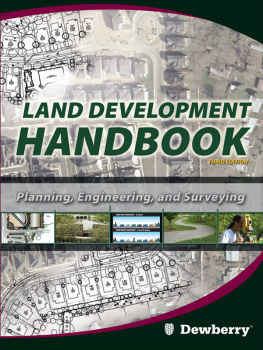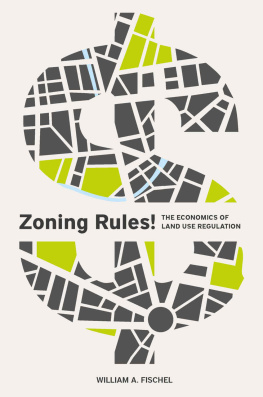FOREWARD TO THE THIRD EDITION
We have been very gratified about the fact that prior editions of this book have been well received and widely utilized. This book was originally published by the National League of Cities and is now being published by the authors. This edition of the book includes a variety of minor corrections and additions throughout the text, based on suggestions received by the authors. The book remains fundamentally the same with the same intent: to provide an easy-to-understand, short and concise description of the fundamentals of zoning.
Carl & Marilyn Stephani
FROM THE FOREWARD TO THE 2 ND EDITION
Zoning is a major and ongoing concern for local governments of all sizes, and often, zoning decisions are controversial. They can dominate the news media and galvanize citizens to spea k out in council meetings. Zoning issues also can be exceedingly complex.
Most zoning disputes, no matter how controversial or complex, are rooted in conflicts related to one or more of the basic principles of the typical zoning ordinance. To help local government officials understand these principles, the National League of Cities has published Zoning 101.
Written especially for local elected government leaders, this guidebook is designed as a primer to
introduce and explain the basic philosophy, terminology, elements, and procedures of zoning. It should be especially useful for local leaders in small communities where there are few, if any, full-time planning staff professionals, and for newly elected government officials who may be unfamiliar with basic zoning definitions and practices.
Carl J. Stephani, a local government planner and manager, and Marilyn C. Stephani, a real estate agent, wrote Zoning 101. The National League of Cities (NLC) appreciates their careful and extensive work on this project. We also thank NLC's Camille Kellogg, Mae Davis, and Jan Hammett for providing editorial, design, desktop publishing, and production support in preparing this guidebook for publication. This latest edition (the first edition was entitled A Practical Introduction to Zoning) contains additions and refinements that enhance the utility of the guidebook, which we believe is a must-have for any local elected government leader.
Donald J. Borut, Executive Director
Jeff Fletcher, Director, Center for Member Programs
National League of Cities
FROM INTRODUCTION TO THE 2 ND EDITION
Zoning is the most pervasive public regulation. It is the epicenter of local politics. It touches and concerns the lives of ordinary people every day and in every way. Zoning has its roots in the nuisance avoidance police power regulations of over a century ago, but it has grown in ways never anticipated when the U. S. Department of Commerce proposed the Standard Zoning Enabling Act in the mid- 1920s. As a planner-lawyer, I am inundated with the latest offerings in the esoterica of zoning massive printed treatises and texts of multiple volumes, monographs on such narrowly focused issues as Concentrated Animal Feeding Operations, and even totally computer-driven regulatory systems with nothing specified and everything by right subject to formulas that can be run if you have a spare gigabyte of memory.
But here in Zoning 101 - A Practical Introduction, we have a plain-language text with its feet firmly planted in the day-to-day realities of zoning theory and administration. From the galaxy of distant treatments of this enormous subject, Zoning 101 lightens our sky with a constellation of just seven basic elements that form the center of the universe for all zoning ordinances. Although ZONING 101 is probably of greatest interest to the inexperienced lay person, even the most hardened zoning veteran will find this book of interest.
The authors combine in their backgrounds more than four decades of professional planning experience, as well as service in elected city and county positions, and in real estate sales and development. That experience brought to bear on this subject makes this second edition of their book essential reading for every citizen who is interested in understanding this important aspect of the operation of their local government. Readers will find this book useful as a primary text for their own education, but I refer to it now and again when I need to give a lecture or run a training session. It's a wonderful source for outlining public presentations. Zoning 101 will turn the novice into an expert and reinforce an expert's understanding of basic principles.
Dwight H. Merriam, FAICP
TABLE OF CONTENTS
FOREWARD TO THE THIRD EDITION
FROM THE FOREWARD TO THE 2 ND EDITION
FROM INTRODUCTION TO THE 2 ND EDITION
TABLE OF CONTENTS
ACKNOWLEDGMENTS
OVERVIEW
Background
Seven Basic Elements
Why So Complicated?
1 USES
Background
Permitted Uses: By Right
Special Uses
Temporary Uses
2 DEVELOPMENT STANDARDS
Background
Development Standards
Variances
3 NON-CONFORMITIES
Background
Non-Conforming Uses
Non -Conforming Special Uses
Non Conforming to the Development Standards - Structures
Non -Conforming to the Development Standards - Lots
Illegal Non -Conformities
Grandfathered Rights
Vested Rights
4 PERMIT EVALUATION CRITERIA
Background
Permit Evaluation Criteria
Special Use Permit Criteria
Temporary Use Permit Criteria
Variance Criteria
Modifications to Non Conformity Criteria
Other Permits
Changes in Zoning
5 PROCEDURES
Background
Four Basic Procedures
Hearings Officer
Appeals
Litigation
6 DEFINITIONS
7 MAP
8 ADMINISTRATION
Background
Projects Permitted Outright
1. Building
2. Planning Department
Projects Requiring Permits
Projects Requiring Zone Changes
Staff Report and Documentation
Permits vs. Zone Changes
Permit and Zone Change Expiration
9 OVERLAY ZONES AND PLANNED DEVELOPMENTS
Overlay Zones
Planned Developments
Varieties of Planned Development Permits
Planned Development Overlay Zones
10 PUBLIC HEARINGS: LEGISLATIVE AND QUASI-JUDICIAL
Background
Legislative vs. Quasi-Judicial Decisions
Public Meetings vs. Public Hearings
Conflict of Interest
11 SUBDIVISION ORDINANCES & DEVELOPMENT CODES
Background
Lot Splits/Lot Line Adjustments
Subdivisions
Development Codes
12 ENFORCEMENT
13 GENERAL PLANS
Background
Federal Programs
Consistency between Zoning and General Plans
14 PERFORMANCE ZONING
15 TERMINOLOGY
Assessor's Parcel Numbers
Case Law
Cities vs. Towns
Codes
Covenants, Conditions, and Restrictions
Development, or Land Development
Form-Based Code
General Purpose vs. Special District Local Governments
Land Use
Motions, Resolutions, and Ordinances
Municipalities
Permit
Property Location and Identification
Public Health, Safety, and Welfare
Public and Private Land
Pyramidal Zoning Ordinances
Section
Special, or Conditional Uses
Statutes vs. Ordinances
Township, Range, and Section
CONCLUSION
ABOUT THE AUTHORS
INDEX
ACKNOWLEDGMENTS
Organizing the material in this book has not been easy. Marilyn deserves credit for the simplicity of its presentation.
The following friends and associates reviewed early drafts of the book: Grady Gammage, land use attorney, Arizona; Marvin E. Gloege, retired planner, Oregon; Craig Greenleaf, planner, State of Washington; Richard Ligon, land use attorney, Oregon; William Offutt, retired county manager, Nevada; and Darrick Wade, architect, Colorado. We greatly acknowledge and appreciate their assistance.


